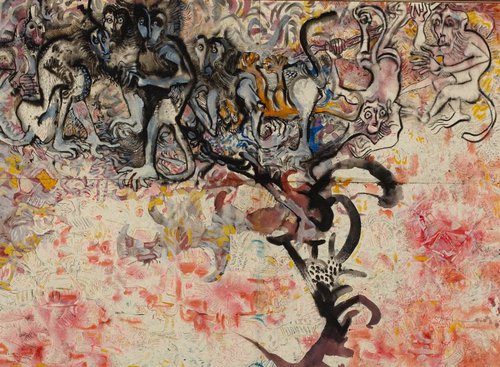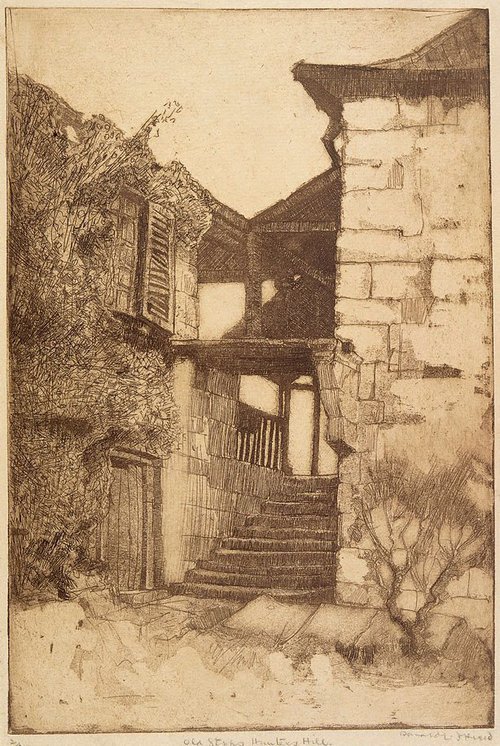Donald Friend
Australia
Born: Cremorne, Sydney, New South Wales, Australia 06 Feb 1915
Died: Woollahra, Sydney, New South Wales, Australia 16 Aug 1989
Biography
Donald Friend was an Australian painter, draughtsman and writer, particularly remembered for his drawings and watercolours on paper. He spent much of his artistic career living outside Australia in places including England, Nigeria, Italy, Greece, Sri Lanka and Bali. In recent years following the publication of his diaries, Friend’s self-acknowledged sexual interest in underage boys has drawn attention and condemnation.
Born in Sydney in 1915, Friend grew up in the artistic circle of his bohemian mother Gwendolyn Emily (née Lawson) where he showed early talent as an artist and writer. Friend studied art with Sydney Long in 1931, when he learnt the technique of etching, and in 1934 attended the Sydney art classes of Antonio Dattilo-Rubbo. In 1936 Friend moved to London, where he studied at the Westminster School of Art with Mark Gertler and Bernard Meninsky.
In 1940 Friend returned to Sydney where he mixed with artists including Russell Drysdale and William Dobell and exhibited at Macquarie Galleries and with the Society of Artists. During the Second World War, Friend enlisted in 1942 as a gunner with the Australian Imperial Force and was stationed at Albury, where he began a friendship with Drysdale who was also living there. This friendship led to their later discovery of Hill End and Sofala, old and seemingly abandoned gold mining towns near Bathurst, New South Wales, which in the 1950s became artists’ communities. Friend also served as an official war artist in the Pacific at Labuan and Balikpapan. After the war Friend moved into Merioola, a boarding house in Woollahra that was a bohemian artistic centre in Sydney in the immediate post-war years.
Constantly restless, from 1949 Friend moved between Italy, Greece and England. In 1951, he was awarded the Flotta Lauro travelling art prize for his mural design Australiana. On his return to Australia in 1953 he painted at Hill End, NSW; in North Queensland; and at Drysdale’s studio in Sydney. In 1955 Friend won the Blake Prize for religious art. From 1957 to 1962 he lived in Sri Lanka, and between 1967 and 1979 in Bali, Indonesia, where he became known for his house at Batujimbar, Sanur, surrounded by his collection of Balinese art and entertained by his own gamelan orchestra.
Suffering health problems, Friend returned to Australia in 1979 and, in 1987, he endured the first of several strokes. Previously left handed, he taught himself to paint with his right hand. Friend’s passion throughout his career was depicting the human figure, however, in his later years he focused on compositions of interiors and still-life subjects.
Friend died on 17 August 1989 in his home at Woollahra and was cremated. A retrospective exhibition was held at the Art Gallery of New South Wales in 1990.
Friend’s diaries were published posthumously from 2001 to 2006 by the National Library of Australia in four volumes. Friend had kept a diary since the age of 14; they are a chronicle of his life and times and are peopled with artists such as Drysdale, Margaret Olley, Jeffrey Smart and Brett Whiteley. The diaries also described his sexual activities with boys and young men.
Considerable debate has ensued about whether it is appropriate to collect and display Donald Friend’s artworks. Given the Gallery’s historically formed collection and Friend’s existing place in Australian art, the Art Gallery of NSW will retain works while not in any way condoning Friend’s conduct. The most recent displays of Friend’s works at the Gallery included a group of 1930s drawings of African objects in 2013 and the paintings of Ex voto c1952 and The fortune teller 1956 in 2014.








